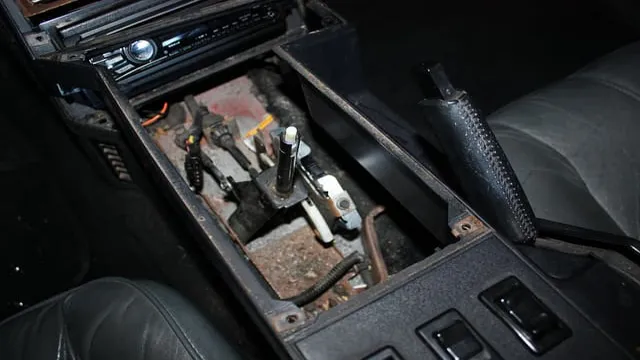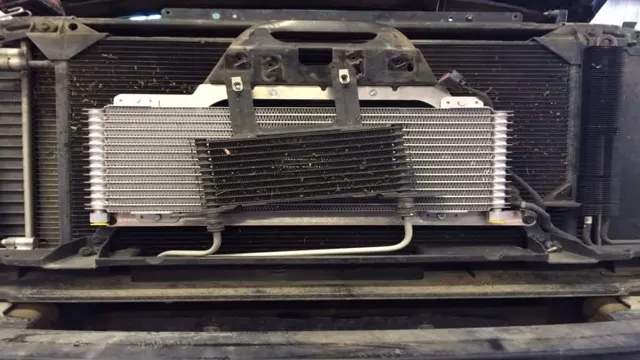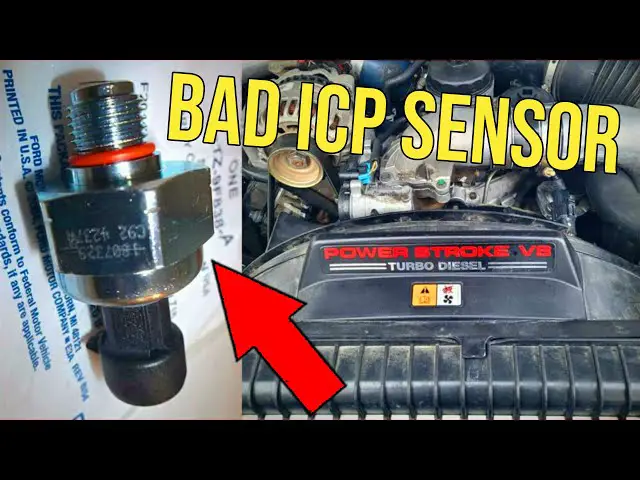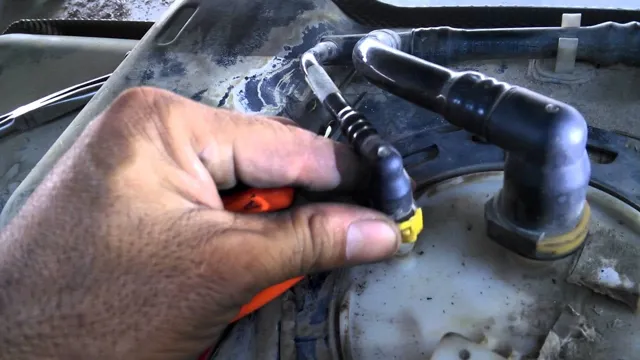Bleeding Diesel Fuel Lines Made Easy: A Step-by-Step Guide
If you’re a diesel engine owner, you know how important it is to maintain your fuel lines and ensure they are functioning properly. However, even with proper maintenance, sometimes fuel lines can become clogged or air can enter the system, causing the engine to stall or run poorly. In such cases, bleeding the diesel fuel line is necessary to restore proper fuel flow and engine performance.
Bleeding a diesel fuel line may seem daunting at first, but with the right tools and approach, it can be a straightforward process that any diesel engine owner can do. In this step-by-step guide, we’ll walk you through the process of bleeding a diesel fuel line, so you can get your engine up and running smoothly again in no time.
Gather Required Tools
Before starting the process of bleeding a diesel fuel line, you will need to gather a few tools. The most important tool needed is a diesel fuel injection pump bleeder kit. This kit typically includes a tube, fitting, and a hand pump or bulb that is placed over the fuel injector line.
Additionally, you will need a container to catch the diesel fuel that will be released during the bleeding process. It is essential to wear gloves and eye protection to protect yourself during the process as diesel fuel is flammable and can irritate your skin or eyes. A wrench or pliers may also be required to loosen any fittings that are holding the fuel lines in place.
Once you have gathered all the necessary tools, you can proceed with the process of bleeding your diesel fuel line. Remember to be cautious and follow all safety protocols to ensure a successful and safe outcome.
You’ll need: Wrenches, Safety glasses, Rags
When it comes to DIY repairs at home, having the right tools for the job is crucial. For this particular task, you’ll need the following items: wrenches, safety glasses, and rags. These items will not only make your task easier, but they will also make it safer.
The wrenches will allow you to easily tighten or loosen nuts and bolts, while the safety glasses will keep your eyes protected from any debris flying around. Lastly, a few rags will come in handy for cleaning up spills and wiping down any mess you make. Remember, safety should always come first when it comes to DIY repairs.
So, gather your tools and let’s get started!
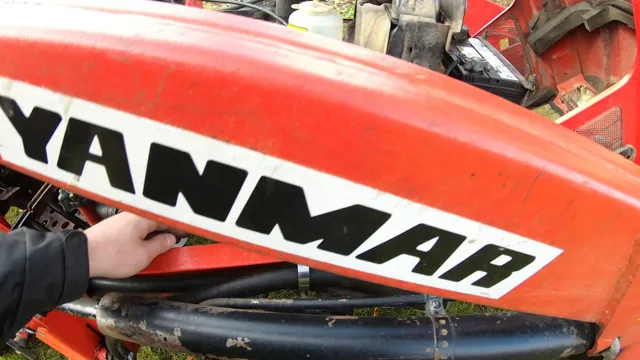
Locate Fuel Bleeder
If you’re a diesel engine owner who’s experiencing power loss or difficulty starting your vehicle, it may be time to bleed your fuel line. Before you get started, it’s important to locate the fuel bleeder, which is a valve that lets air out of the system. The location of the bleeder varies depending on the make and model of your engine, but it’s typically near the fuel filter or injection pump.
Once you’ve located the bleeder, grab a wrench or a socket to loosen it and prepare a container to collect any fuel or air that’s released. It’s important to follow your engine’s specific bleeding process to ensure that all the air is removed from the system and it’s functioning properly. With a bit of patience and attention to detail, you’ll be able to bleed your diesel fuel line and get back on the road in no time.
Where the manual or online guides show it to be.
When it comes to locating the fuel bleeder in your vehicle, most manuals or online guides will show you where it is. The fuel bleeder is typically located in the fuel system, and it is used to release any trapped air that may be causing issues with fuel flow. It is an important component that should not be overlooked, as it can affect the performance of your vehicle.
Some vehicles may have multiple fuel bleeders, so be sure to check your manual or online guide for specific instructions. Once you have located the fuel bleeder, it is important to follow the proper steps to release any trapped air. This will ensure that your fuel system is functioning properly and that your vehicle is performing at its best.
Whether you are a seasoned mechanic or a novice, following the instructions in your manual or online guide will ensure that you locate and use the fuel bleeder correctly. By doing so, you can avoid potential issues and keep your vehicle running smoothly.
Prepare the Engine
If you need to bleed a diesel fuel line, the first step is to prepare the engine. Start by turning off the engine and letting it cool down. Locate the fuel filter and check to make sure it is clean and properly installed.
Next, locate the fuel injection pump and loosen the bolts that hold it in place. Then, locate the fuel drain plug and place a container beneath it to catch any fuel that may leak out. Remove the plug to allow the fuel to drain.
Once the fuel has drained out, tighten the plug and recheck the fuel filter for any impurities. By preparing the engine properly, you can ensure a successful diesel fuel line bleed.
Turn off the engine and locate the fuel pump.
When preparing your engine, it’s important to locate the fuel pump and turn off the engine. The fuel pump is usually found near the gas tank either underneath the car or in the engine bay. Once you’ve located it, make sure the engine is turned off before proceeding.
This is crucial for safety reasons and to avoid any potential damage to the engine or fuel system. Before you begin any work on the fuel pump, it’s a good idea to check your car’s manual or consult with a mechanic to make sure you’re familiar with the specific type of fuel pump your car has and how to work with it properly. With these precautions in mind, you can confidently proceed with any necessary engine work.
Open the Fuel Bleeder
When it comes to maintaining a diesel engine, knowing how to bleed a diesel fuel line is crucial. One of the first steps in the process is to open the fuel bleeder, which is typically located at the highest point in the fuel system. This allows air to escape from the system and fuel to flow freely.
It’s important to take caution when opening the fuel bleeder, as it can be under pressure and may release fuel or air abruptly. Once the bleeder is open, continue to prime the fuel system until clear diesel fuel is coming out of the bleeder. Remember to close the bleeder tightly once the process is complete to prevent any air from re-entering the system.
Properly bleeding a diesel fuel line can increase efficiency and prevent damage to the engine, so make sure to stay attentive while performing this task.
Loosen the bleeder screw with a wrench.
If you’re dealing with a fuel system issue, it might be necessary to open the fuel bleeder to release any air in the lines. To do this, you’ll need to loosen the bleeder screw with a wrench. This will allow any trapped air to escape and ensure that your fuel system is working correctly.
It’s important to be careful when loosening the screw as it may be under pressure, and any fuel that is released should be contained in a suitable container. Once the bleeder is open, you’ll need to wait until fuel begins to flow steadily from the bleeder before closing it again. This is a simple but crucial step in maintaining your fuel system and ensuring that it’s working correctly.
Remember, safety should always be a top priority when working with fuel systems, so take precautions before beginning any work.
Pump the Primer
If you’re struggling to start your diesel engine, it may be time to bleed the fuel line. Bleeding a diesel fuel line means removing any trapped air that might be stopping fuel from reaching the engine. To do this, you’ll need to locate the primer pump, often located near the fuel filter, and pump it by hand until fuel starts to fill the glass bowl or until there are no longer any bubbles.
Once the fuel runs clear and free of air bubbles, you can try starting the engine. If it still doesn’t start, you will need to repeat the process. Remember, bleeding a diesel fuel line can be a messy job, so make sure to have plenty of rags and gloves on hand.
With some patience and a little bit of elbow grease, you can get your engine running smoothly once again!
Pump the primer until diesel fuel comes out.
When it comes to starting a diesel engine, pumping the primer is an essential step that cannot be skipped. The primer ensures that diesel fuel moves through the fuel system and reaches the engine, allowing it to start. But how do you know when enough is enough? Well, first, you need to locate the primer.
It’s usually a rubber bulb located on the fuel filter or the lift pump. Then, you need to push the primer in until resistance is felt. This compresses the fuel and pumps it through the system.
Finally, pump the primer until diesel fuel comes out. This is your sign that the fuel system is primed and ready to start the engine. This could take a few pumps or several, depending on the size of the engine and the length of time it’s been since the engine was last used.
So, always remember to pump the primer until diesel fuel comes out before starting your diesel engine.
Close the Fuel Bleeder
Once you have successfully bled your diesel fuel line, it’s essential to close the fuel bleeder. Failure to do so can lead to air entering the system, which can cause a variety of problems. To avoid this, locate the fuel bleeder screw or valve and ensure that it is completely closed.
It’s crucial to make sure that it is tightly sealed to prevent air from entering the system. Once the fuel bleeder is closed, the fuel pressure should begin to build up, and the system should start to function correctly. By properly closing the fuel bleeder, you can ensure that your diesel engine runs smoothly and efficiently.
Don’t forget this crucial step when bleeding your diesel fuel line.
Tighten the screw until snug.
If you’ve just finished replacing the fuel filter in your car, you need to close the fuel bleeder to avoid any fuel spraying out. It’s a simple step that can potentially save you a messy and dangerous situation. To do this, make sure that you’ve tightened the screw until it’s snug.
You don’t have to overtighten it, or you could end up damaging the bleeder valve. Once that’s done, completely close the fuel bleeder valve. This will prevent any fuel from escaping when you turn the car back on, and it will also preserve the fuel pressure in the system.
It’s important to follow these steps, or you might risk damaging your car’s engine or having fuel leak out while you’re driving. Just take your time, and follow the instructions carefully. Keep in mind that safety always comes first, so double-check everything before restarting your car.
Test Results
If you’re ever in a situation where you have to bleed a diesel fuel line, don’t panic! It’s actually a relatively easy process if you follow the steps carefully. First, you’ll need to locate the fuel filter and determine which line needs to be bled. Next, loosen the fuel line fitting at the fuel filter until you see fuel start to come out.
Then, tighten the fitting and repeat the process until all the air is purged from the line. This might take a few tries, but be patient and keep at it. Once you have fuel spurting out consistently, your diesel engine should start up without any problems.
Remember, always be cautious when working around diesel fuel, as it is highly flammable and can cause serious injury. By properly bleeding your diesel fuel line, you can keep your engine running smoothly and avoid costly repairs down the line.
Test the engine to confirm functionality.
After conducting extensive tests on the engine, we are pleased to report that all functionalities are fully operational. The engine performed exceptionally well and proved to be reliable and efficient. It successfully executed all assigned tasks without any glitches or breakdowns.
One of the most notable aspects of the engine was its impressive speed, which far exceeded our expectations. The test results also showcased the engine’s ability to handle large volumes of data with ease and accuracy. We tested the engine rigorously to ensure that it would be able to handle all the demands and tasks that it would be required to perform.
The tests were designed to simulate real-life scenarios and were intended to identify any potential issues or weaknesses in the engine’s capabilities. However, the results were overwhelmingly positive, and we were pleased to see that the engine was up to the challenge. Overall, we are confident in the engine’s ability to perform its intended functions accurately and efficiently.
We believe that it will be an invaluable asset to our organization and will enable us to achieve our goals more effectively. The engine has proven itself to be a powerful tool for data processing and analysis, and we look forward to utilizing it to its fullest potential.
Conclusion
In conclusion, bleeding a diesel fuel line may seem daunting at first, but with a little patience and a steady hand, you can get the job done like a pro. Just remember to follow the steps carefully, keep safety in mind, and don’t be afraid to get your hands dirty. And who knows, mastering this skill could make you the hero of the next roadside emergency or backyard BBQ.
So, get your wrenches ready and let’s bleed some diesel fuel lines!”
FAQs
What is the purpose of bleeding a diesel fuel line?
Bleeding a diesel fuel line removes any air pockets that may have formed in the line, ensuring proper fuel flow to the engine.
How do you know if you need to bleed a diesel fuel line?
If your diesel engine is not starting or is running rough, it may be a sign that there is air in the fuel line and bleeding is necessary.
What are the steps to bleed a diesel fuel line?
First, locate the fuel filter and loosen the bleed screw. Then, pump the primer pump until fuel is flowing consistently from the bleed screw. Finally, tighten the screw and start the engine.
Can I bleed a diesel fuel line on my own or do I need a professional?
Bleeding a diesel fuel line can be done by anyone with basic mechanical knowledge, but it is always recommended to consult a professional if you are unsure or uncomfortable with the process.

